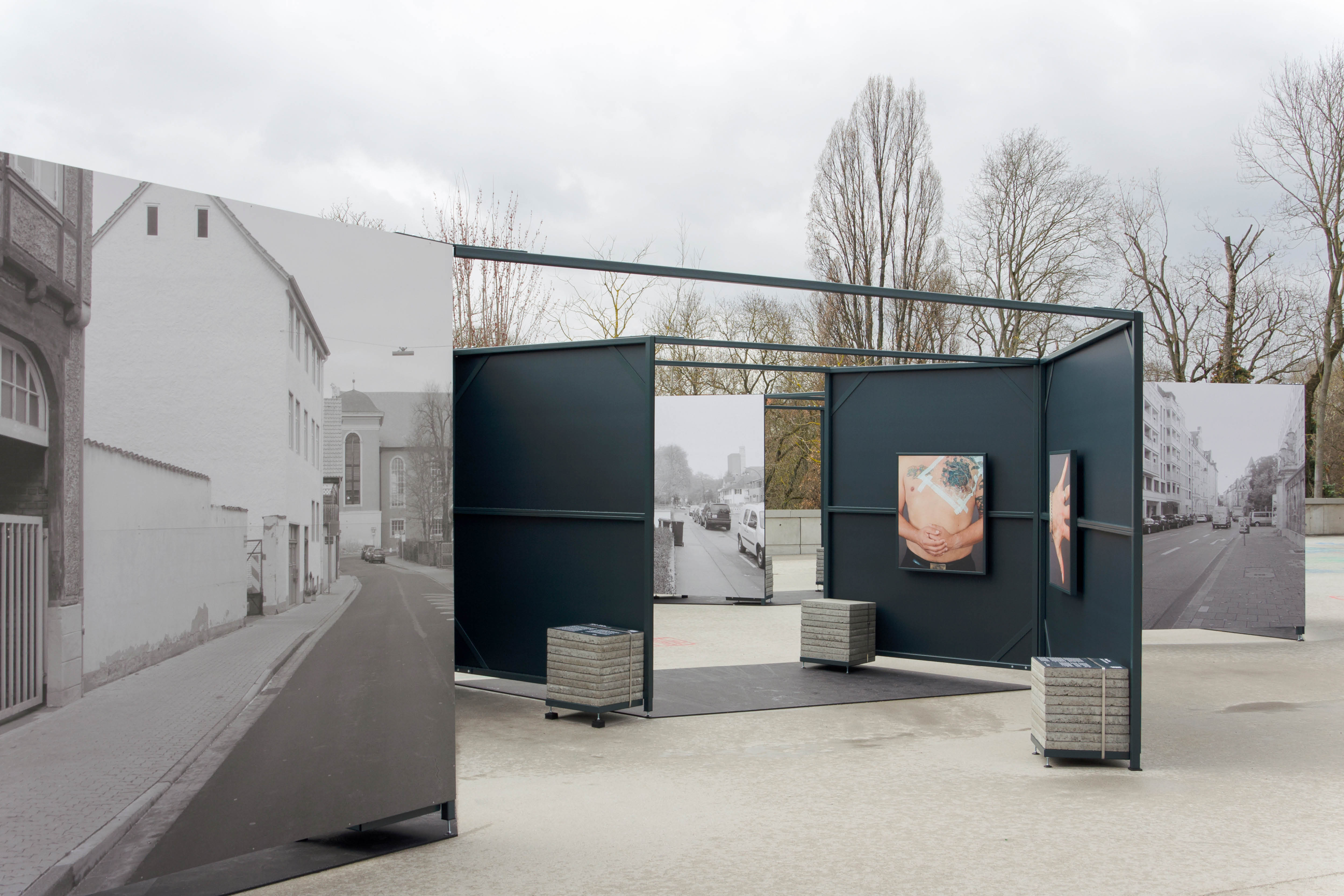

Always happy to
meet new people!
For general inquiries
hello@lmnop.works
Achter de Dom 14
3512 JP, Utrecht


In the project ‘Haut, Stein’, photographer Jakob Ganslmeier examines the persistence of Nazi symbols in public spaces and tattoos, revealing their role in right-wing extremism. Through portraits and interviews, he offers insight into extremism and exit processes. The project forms a very relevant contemporary visual document, both historically and in the political context of the here and now. It is both narratively and visually impressive and at the same time dares to be truly vulnerable.
Due to the historical and political layers in the work, we developed a method to narrate the project step-by-step. It is vital that the narrative and complete story prevail and that single images or depicted symbols do not become isolated visual landmarks. By creating an in- and exterior, the project unravels itself as the visitors get closer.
The exteriors of the spatial modules show the monochrome diptychs of the ‘Stein’-part of Ganslmeier’s work, depicting lingering Nazi symbols in public space. This part is the first to be encountered and makes the images function as a mirror of the surrounding public space.
The interior houses the color portraits from the ‘Haut’-selection, that show the removal of tattoos depicting right-wing symbols and signs. These portraits are placed in floating steel frames which are specifically placed to make sure the most confronting images are the ones which are the least visible from the outside.
The result is an exhibition that convincingly stages the impressive impact and monumental quality the images contain. The exhibition was designed to be both open and spacious enough to function under Covid-19 measures. Furthermore, the modules do not need to be fixed into the location’s floor. To provide for sufficient wind-ballast, simple stacks of secured concrete tiles are connected to the steel construction functioning as information panels simultaneously.
The exhibition first launched in Weimar (2021) and has traveled to Nordhausen (2021-2022) and in the NS-Dokumentationszentrum Cologne (2022).




"To what extent is the German past really past?"








